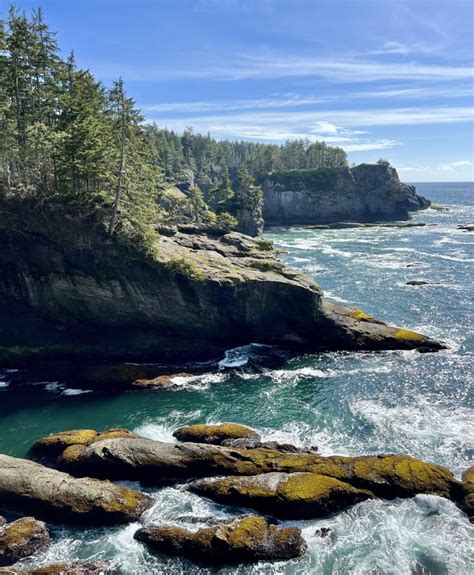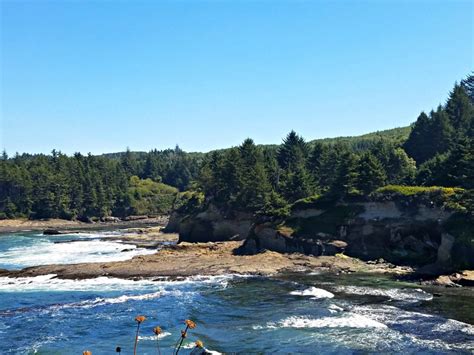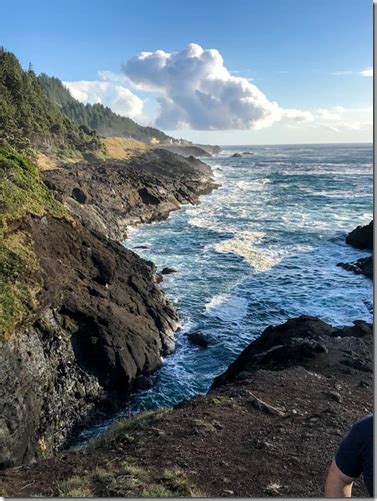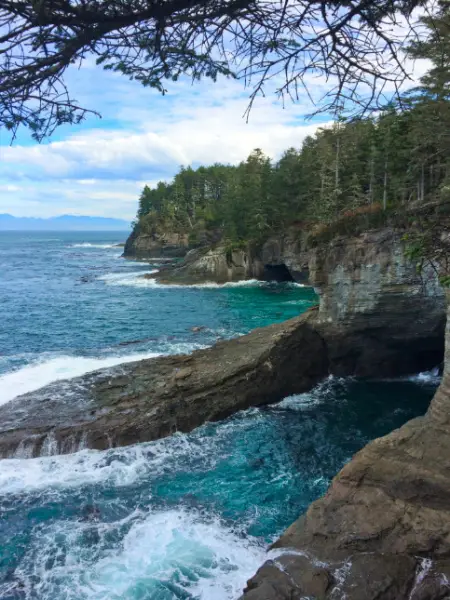Nestled along the rugged coastline of the Pacific Northwest, Ruby Beach stands as a stunning testament to nature’s artistry. Known for its striking geological features, including dramatic sea stacks and vibrant tide pools, this beach is more than just a scenic destination; it is a cultural gem steeped in history. From the rich ecosystems that thrive in its unique landscape to the Indigenous stories that have been passed down through generations, Ruby Beach offers a fascinating glimpse into both natural beauty and cultural heritage. Join us as we explore the geological wonders, diverse flora and fauna, and the visitor experiences that make Ruby Beach truly unforgettable.
ritarblog.com invites you to explore this topic thoroughly.
1. Introduction to Ruby Beach
Ruby Beach, nestled within Olympic National Park in Washington state, is a captivating shoreline that draws visitors with its blend of natural beauty and cultural significance. Known for its striking geological features, the beach boasts towering sea stacks, driftwood-strewn sands, and lively tide pools brimming with marine life. The name “Ruby” originates from the deep reddish color of the beach’s pebbles, a distinctive characteristic that sets it apart from other coastal gems.
More than just a breathtaking landscape, this secluded haven plays a vital role in the ecological fabric of the Pacific Northwest. Its varied habitats teem with a rich diversity of plants and animals, making it a critical area for protecting wildlife. Adding to its importance, Ruby Beach holds deep cultural significance for Indigenous communities, who have long relied on its resources for survival and cultural traditions.
At Ruby Beach, visitors are invited to embrace its tranquil beauty, offering opportunities for exploration and reflection. Whether you wander along the sandy shores, gaze upon the distinctive rock formations, or delve into its rich cultural past, Ruby Beach promises an unforgettable experience that connects you to both the natural world and the stories of those who came before.

2. Geological Features
Ruby Beach is famous for its impressive geological formations, a testament to the raw force of nature. A standout feature of this coastal landscape is the series of dramatic sea stacks, towering rock formations sculpted by the relentless pounding of waves and coastal erosion over millennia. These majestic structures emerge from the ocean, creating a breathtaking contrast against the sandy beaches and vibrant tide pools.
The beach is a unique blend of fine sand and smooth, reddish pebbles, a legacy of the region’s volcanic past. This striking color adds a captivating visual dimension to the landscape, enticing visitors to explore its shores. Tide pools, scattered along the beach, reveal a vibrant tapestry of marine life. Starfish, sea anemones, and a variety of shellfish flourish within this dynamic ecosystem.
Furthermore, Ruby Beach is nestled within the expansive Olympic National Park, a UNESCO World Heritage Site. This park’s geology is a tapestry of diverse ecosystems, ranging from the rugged coastline to the lush forests. These contrasting landscapes provide a singular opportunity to witness the transformative power of geological processes shaping the region. The combined allure of these features makes Ruby Beach a captivating destination for geology enthusiasts and nature lovers alike.

3. Flora and Fauna
Ruby Beach is a haven of biodiversity, with a rich tapestry of flora and fauna thriving in its distinctive coastal environment. The beach is bordered by vibrant coastal forests, dominated by towering Sitka spruce, Western red cedar, and Douglas fir. These majestic trees form a breathtaking backdrop, offering sanctuary to a variety of avian life. Eagles, gulls, and herons gracefully glide above the shoreline, adding to the beach’s captivating natural beauty.
The Pacific Ocean’s nutrient-rich waters create a vibrant ecosystem in the intertidal zones. Tide pools, exposed during low tide, teem with life, showcasing the adaptations of creatures like starfish, sea anemones, and crabs. The flora, too, plays a crucial role. Resilient beach grasses and wildflowers, such as beach strawberries and sand verbena, stabilize the sandy dunes, preventing erosion.
Furthermore, the encompassing marine environment sustains a vibrant population of larger wildlife, such as sea otters and seals, frequently observed relaxing on the rocky shores or frolicking in the waves. This abundance of biodiversity not only augments the aesthetic appeal of Ruby Beach but also highlights its crucial ecological value, solidifying its status as a vital conservation site and a captivating destination for nature aficionados.

4. Cultural and Historical Context
Ruby Beach holds profound cultural and historical significance, especially for the Indigenous peoples who have called this region home for millennia. This coastal area has long served as a vital resource for local tribes, providing sustenance through fishing and gathering, materials for building shelters, and a deep spiritual connection to the land and sea. These traditional practices, passed down through generations, underscore the enduring bond between the community and its environment.
European explorers first documented the region in the 18th century, sparking increased interest in its natural beauty and resources. This contact, however, also brought challenges, including displacement and cultural changes for Indigenous communities. Today, efforts are underway to honor and preserve the area’s rich cultural heritage, including collaborations with local tribes to share their stories and traditions.
Ruby Beach is not only a breathtaking example of natural beauty, but also a testament to the enduring connection between humans and their surroundings. It underscores the vital importance of protecting cultural heritage within this special place.
5. Ecological Importance
Ruby Beach is a cornerstone of the Pacific Northwest’s ecological balance, providing vital habitat for a diverse array of species and fostering biodiversity. Its unique coastal environment supports a spectrum of ecosystems, ranging from the intertidal zones teeming with marine life to the lush forests that shelter numerous bird and mammal species. This rich biodiversity contributes significantly to the region’s overall health, making it an area of paramount importance for conservation.
The beach’s tide pools, brimming with starfish, sea anemones, and a multitude of marine organisms, are crucial for understanding ocean health and the intricate workings of marine ecosystems. These habitats provide invaluable insights into the effects of climate change and human actions on marine life. Furthermore, the coastal forests play a vital role in preventing erosion and maintaining water quality, serving as natural barriers against storms and rising sea levels.
Protecting Ruby Beach and its surrounding ecosystems is essential for preserving the natural beauty of this coastal gem. This preservation also ensures the survival of the diverse flora and fauna that call this area home, which are vital to the ecological integrity of the entire region.
6. Visitor Experience
A visit to Ruby Beach is an immersive experience that blends breathtaking natural beauty with opportunities for exploration and relaxation. Upon arrival, visitors are greeted by the sight of dramatic sea stacks majestically rising from the ocean, beckoning them to wander along the sandy shoreline and discover the unique geological features that make this beach so special. Vibrant tide pools, teeming with colorful marine life, invite hands-on exploration, making Ruby Beach a beloved destination for families and nature enthusiasts alike.
The beach offers a wealth of photographic opportunities, particularly during sunrise and sunset when the landscape is awash in warm, golden light. As visitors wander along the shore, they can collect smooth, reddish pebbles and driftwood, each piece a silent testament to the ocean’s relentless power.
Adventure seekers can explore the nearby hiking trails that wind through lush coastal forests. These trails offer a glimpse into the region’s diverse plant life and local wildlife. Educational programs and guided tours are frequently available, enriching visitors’ appreciation of the area’s ecological and cultural importance.
Looking to relax in stunning surroundings, observe incredible wildlife, or delve into the fascinating history of Ruby Beach? This experience will create a lasting impression, leaving you with a profound appreciation for this coastal treasure.
Ruby Beach stands as a remarkable testament to the natural and cultural heritage of the Pacific Northwest. Its stunning geological features, rich biodiversity, and deep-rooted history offer visitors a unique opportunity to connect with nature. As we explore and appreciate this coastal gem, we must also commit to its preservation for future generations.
ritarblog.com

